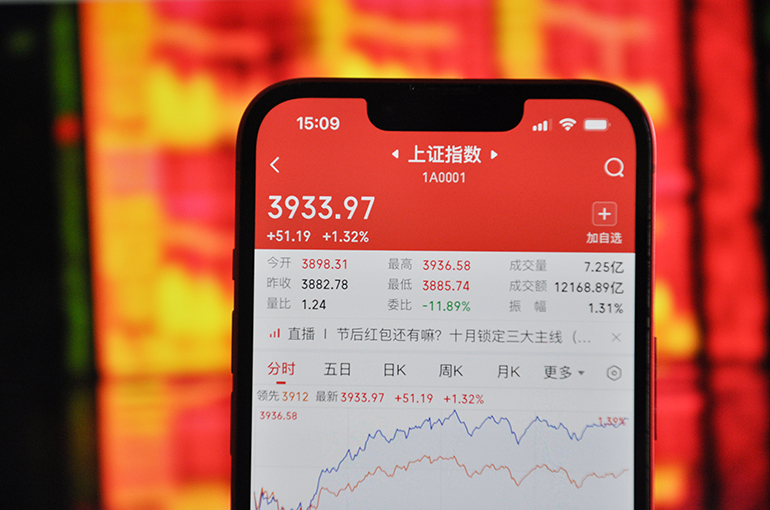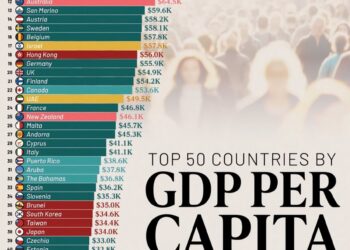Select Language:
Shanghai’s top stock index hit a 10-year high for the second time in two months following the reopening of trading after the extended National Day holiday. Analysts believe this upward momentum could persist through the fourth quarter.
The Shanghai Composite Index closed up 1.3 percent at 3,933.94 yesterday, reaching its highest point since August 2015. However, it fell 0.5 percent to 3,913.8 during the midday break today. The index also achieved a 10-year peak on August 18 and has gained roughly 17 percent so far this year.
The Shenzhen Component Index rose 0.5 percent to 13,725.56 yesterday, while the ChiNext Index increased 0.7 percent to 3,261.82. Both indices declined today—by 1.9 percent and 3.4 percent respectively—but have surged around 31 percent and 52 percent year-to-date.
“The belief that the market remains in a secondary bullish phase hasn’t changed, nor has the trend of increasing capital inflows,” said Zhang Xia, chief strategy analyst at China Merchants Securities. “These are the main forces behind the steady upward movement.”
An employee at Maxwealth Fund Management told analysts that the Chinese mainland stock market remains relatively low. “With clear industrial trends like artificial intelligence, innovative pharmaceuticals, and robotics, plus the phased easing of China-U.S. relations, there’s solid support for medium-term risk appetite in the Chinese market,” they said.
In the upcoming quarter, the market is expected to see a flurry of policy announcements and the release of third-quarter financial results.
Insiders generally hold a positive outlook on policy initiatives for the fourth quarter, noting that China will soon begin implementing policies outlined in the 15th Five-Year Plan. They expect these policies to create new thematic investment opportunities for the market.
Foreign investors have demonstrated strong interest in the Chinese financial markets and are optimistic about future growth prospects.
“We’ve conducted multiple roadshows in the U.S. and across Asia over the past month, engaging with investors with diverse investment goals,” said Wang Zonghao, head of China equity strategy research at UBS. “Overall, investors are very interested in Chinese stocks, and more are aligning with our more optimistic outlook.”
UBS Investment has observed that international investor interest in China is at its highest in recent years. Over the past month, investors have shown particular focus on competition driven by anti-involution strategies, AI development, and capital returns, expanding their interest beyond traditional internet and consumer sectors, Wang explained.
“Our strategy of overweighting technology, media, and telecom stocks has also attracted many investors,” Wang added. “There remains considerable potential for further global fund inflows into China.”
The rebound of China’s stock markets has supported a surge in public fund issuance, nearly doubling the number of new funds in the first three quarters of this year compared to last year, with total capital raised increasing by 90 percent.
For the fourth quarter, securities professionals continue to favor investments in AI computing, semiconductors, and industries related to anti-involution strategies. Key events this month include the Fourth Plenary Session of the 19th Central Committee of the Communist Party of China and the release of third-quarter financial reports.
Whether new policies or earnings reports meet expectations, focus will remain on sectors like AI computing and applications, semiconductor independence, solid-state batteries, commercial aerospace, and controllable nuclear fusion, according to analysts.






